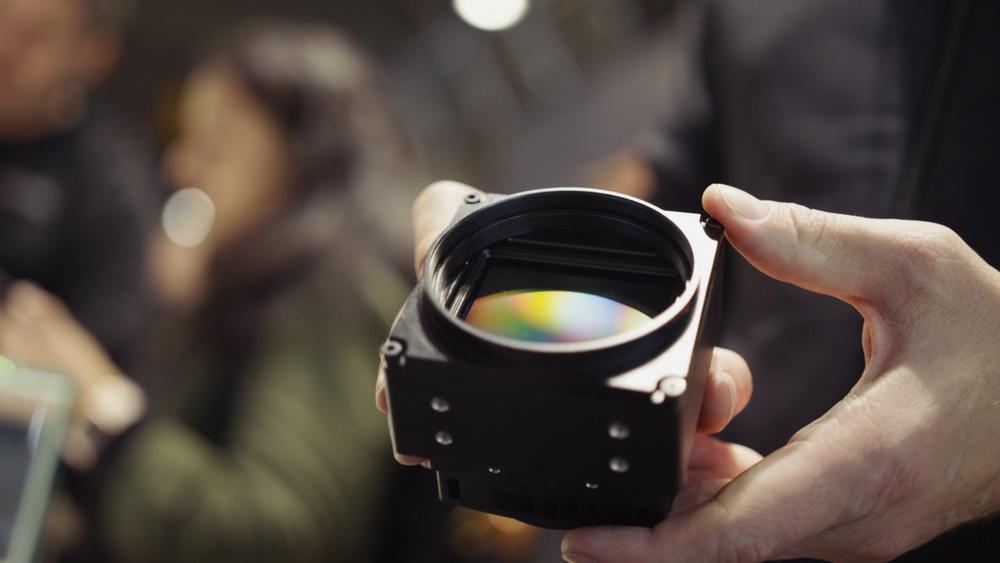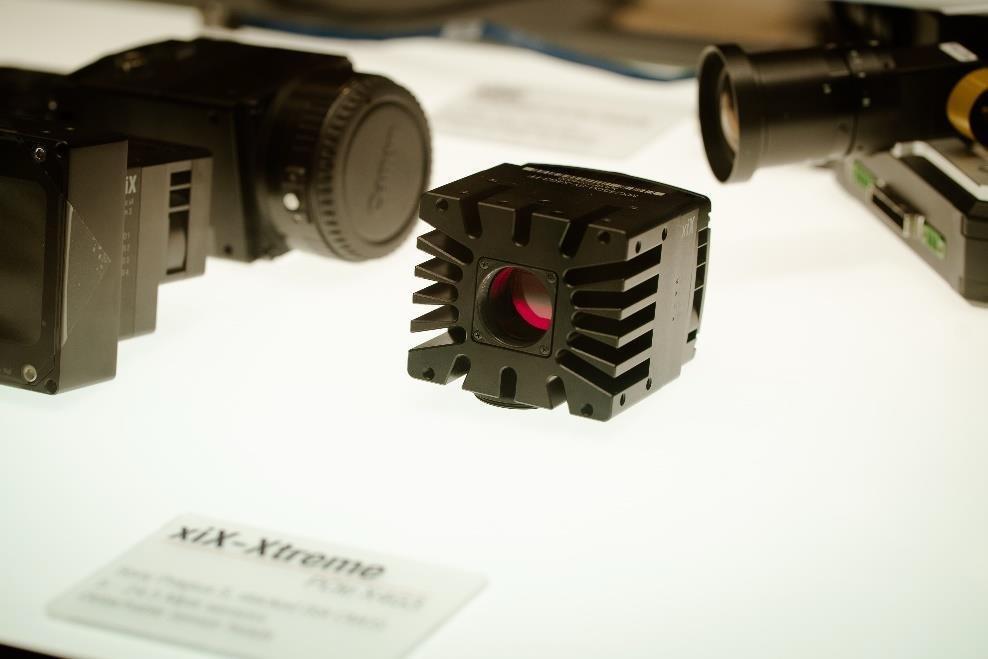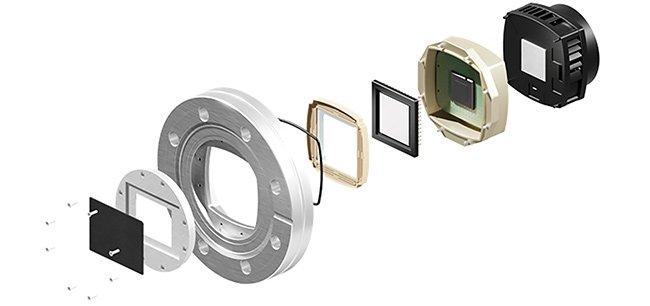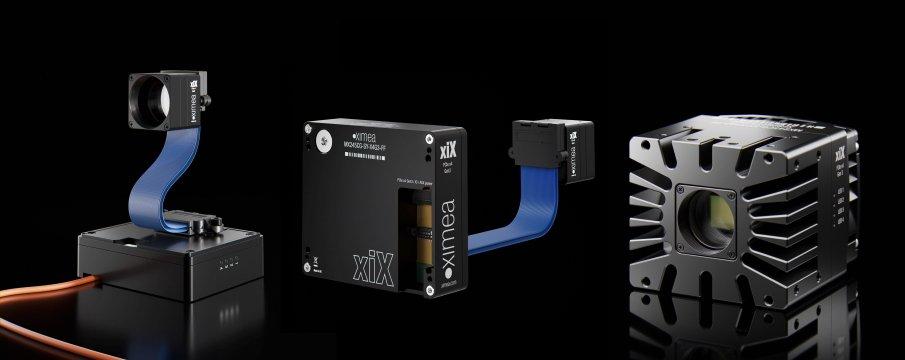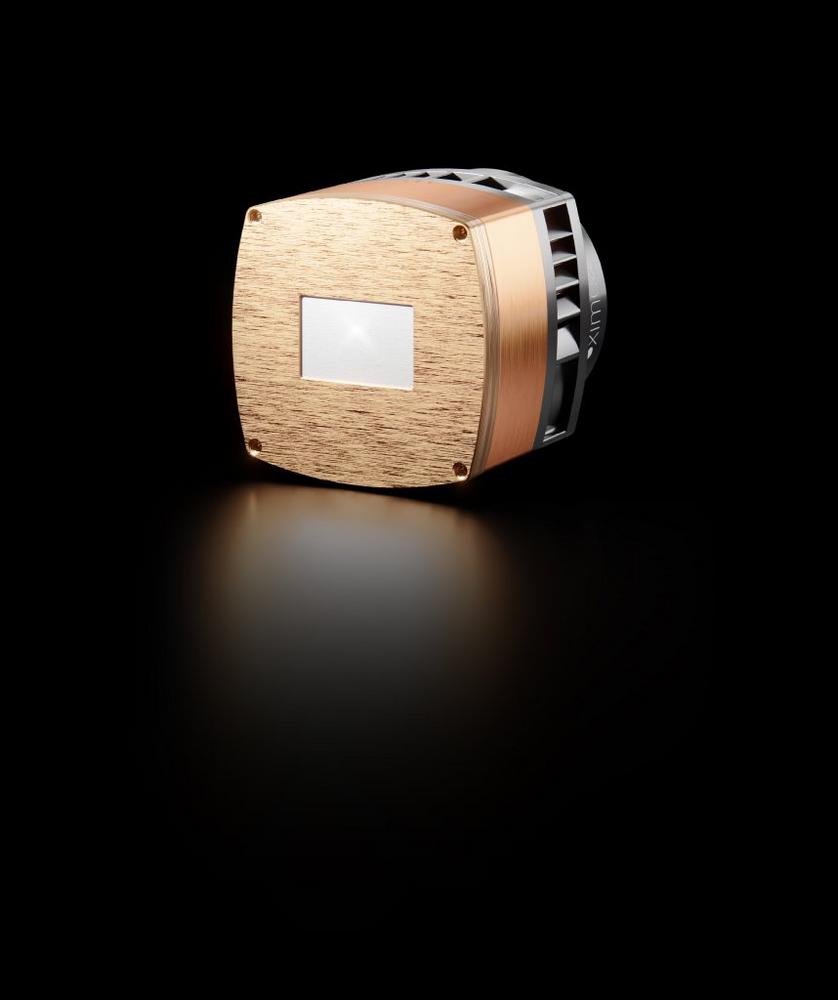-
New camera models with medium format 4.1” sensors Sony IMX811
XIMEA, the innovator of high-resolution cameras with a unique feature set, expands the xiX-XL family by introducing the currently highest resolution cameras using a backside illuminated Sony IMX811 sensor. PCIe speed and Sony IMX811 brilliance The MX2457 leverages the high-bandwidth PCIe interface for real-time data transfer, crucial for demanding applications. The Sony IMX811 sensor delivers stunning detail and sensitivity, ideal for surface inspection, texture analysis, and City mapping. Key Features • Ultra-High Resolution: The MX2457 models boast a remarkable 245.7 Mpix, with an effective resolution of 19,200 x 12,800 pixels. This ensures detailed and precise imaging, essential for applications focused on Outdoor 3D mapping and Videogrammetry. • Backside Illumination Technology: Compared to…
-
Built for speed, designed for you | XIMEA
At XIMEA, our camera portfolio consists of 450 cameras and counting. From rugged industrial cameras, super small sub-miniature cameras, blazing fast PCIe high-speed solutions, and cooled scientific cameras, our portfolio is applicable to almost any industry. Our knowledgeable technical sales team is well versed in the broad application space that our cameras inhabit and is excited to help make your next project a success. Powerful processing, minimal footprint Is it possible to record and process hundreds of frames per second from three cameras with a device that is smaller than a laptop? The answer is yes, with the Nvidia Orin NX combined with the XIMEA carrier board. The XIMEA carrier…
-
XIMEA to Showcase Cutting-Edge xiX-Xtreme Camera Series at SPIE Photonics West 2025
At the event, XIMEA will be showcasing among others its latest camera series, the xiX-Xtreme. Designed for demanding industrial and scientific applications, the xiX-Xtreme series offers unparalleled performance and flexibility. Equipped with state-of-the-art Sony Pregius S sensors and high-speed PCIe interfaces, these cameras deliver exceptional image quality and data throughput. Key features of the xiX-Xtreme series include: 16.1 Mpix – 24.5 Mpix, Sony IMX530*1*2 sensors Detachable sensor head for super compact form factor and improved image quality Quality inspection, medical and scientific imaging, broadcasting and many more “We are thrilled to show the xiX-Xtreme series at SPIE Photonics West,” said Kevin Toerne, Technical Sales Manager and CEO at XIMEA…
-
XIMEA to Showcase Cutting-Edge Subminiature Cameras at SPIE Photonics West 2025
The event, taking place from January 28-30 at the Moscone Center in San Francisco, California, will feature XIMEA’s latest advancements in subminiature camera technology. At booth number 3674, attendees will explore XIMEA’s compact and high-performance cameras designed for demanding applications. The subminiature xiMU cameras offer exceptional image quality, super small form factor, and robust construction, making them ideal for a wide range of industries, for example Machine vision Medical and scientific imaging Robotics and many more Key features of XIMEA’s subminiature cameras include: 5.0 – 19.6 Mpix Up to 48 FPS Rolling and global shutter options "We are thrilled to showcase our latest subminiature camera innovations at SPIE Photonics West,"…
-
XIMEA enables new insights with innovative UV camera technology
Within the realm of modern technology, cameras have progressed from mere devices capturing visible light to sophisticated tools divulging concealed facets of the electromagnetic spectrum. One of the innovations is the UV camera, delving beyond human visual perception, and unlocking a realm of information that was previously unattainable. UV cameras operate on the principle of capturing ultraviolet (UV) light, an unseen segment of the electromagnetic spectrum bearing insights into various phenomena, from forensics to astronomy. UV cameras function by capturing the UV light that objects reflect or emit. They employ specialized sensors or filters detecting and recording UV wavelengths. Unlike traditional cameras relying on visible light, UV cameras integrate components…
-
sCMOS Camera Designs Push the Limits on Resolution
Pushing the limits For a long time, the diffraction limit defined by Ernst Abbe described a natural barrier limiting the ability of optics to resolve small objects. In its original sense, the Abbe limit states that shorter wavelengths allow higher image resolution and therefore a heightened ability to observe small structural features in the image. Although Abbe demonstrated this fundamental law in the visible range, it applies to all wavelengths of the electromagnetic spectrum, including the high-energy photons of the EUV and soft x-ray regimes. It even applies to electron-based microscopy methods. Although rules around resolution and the diffraction limit are still valid when resolving images with EUV, soft…
-
Visit XIMEA booth at the Photonics West 2023 in San Francisco (Messe | San Francisco)
Welcome back Photonics West! XIMEA’s first show in the 2023 trade show season will be the SPIE. Photonics West. The team will be presenting the latest developments in scientific and industrial cameras and we are looking forward to discuss with you the latest requirements. You wil find us at booth #3165, from January 31th to February 2nd. Among the product newcomers on display in Frisco will be the latest camera models with high resolution Sony IMX455, IMX461 and IMX411 sensors. With a range from 61 to 151 Mpix, using BSI sensors, these are a perfect fit for demanding applications from Aerial mapping to Astronomy and others. Our first expo…
-
XIMEA’s new models from the xiX camera series, equipped with Sony’s Presgius S sensors streaming at their full speed capability
Outstanding properties of the next evolution of Sony CMOS sensors include the small pixel size in combination with BSI – backside illumination technology. Small pixels means that sensors with a high resolution of 24.5 Mpix can stay very compact contributing to closer proximity for multi camera setups. The backside illumination compensates for the small pixel and even improves the standard parameters, offering low noise, high dynamic range and sensitivity. The new technology outperforms the low-noise values of CCD sensors at the same time providing high-speed bandwidth with Global shutter.The pixel size of 2.74 µm helps to use C-mount lenses thus improving the cost effectivity and enabling miniature size for mobile and…
-
New models for xiJ family of sCMOS cameras, include Backside Illuminated
Continuous progress in scientific fields places ever higher demands on the tools used in various research application areas. To meet these increased requirements XIMEA has integrated the newest technologies improving the parameters important for the scientific community. This progress started with the introduction of the newest Scientific CMOS (sCMOS) sensors by Gpixel company, assembled mainly under GSENSE family. The XIMEA team chose to start with models based on GSENSE5130, GSENSE400, GSENSE6060 and especially GSENSE2020 including the BSI versions. The main distinguishing features of the sCMOS sensors are their remarkable Dynamic range of up to 90 dB and exceptionally low noise down to 1 e-. With the BSI or Backside illuminated…
-
New cooled X-Ray Camera models
Last year marked another step in the slow discontinuation of CCD sensors. The biggest impact had the announcement of End of Life status for large format KAI sensors from ON Semiconductor (originally from Kodak and later Truesense) like the 11 Mpix KAI-11002, 16 Mpix KAI-16000 or KAI-16070 and 29 Mpix KAI-29052. XIMEA was utilizing these sensors among others in the family of compact X-ray cameras called xiRAY. To offer equivalent or even better substitutes, the XIMEA team started working on several replacement models. These cameras include the latest generation of scientific CMOS sensors for increased performance over CCDs in many categories. Fiber optic tapers and faceplates are bonded to these sensors to…

